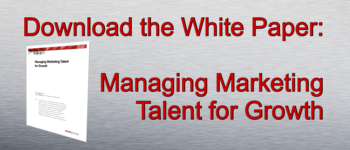Organic growth can be accelerated by tackling it as a process. By that term we mean doing the right things in the right order, applying the right resources and measuring the appropriate outputs so as to be able to drive continuous improvement.
Importantly (indeed, crucially) organic growth is a social process. It involves people collaborating around knowledge. And yesterday’s ways of organizing companies don’t support today’s need to drive organic growth.
The hierarchical organization structure came to us from the military, where it was critical that commands be carried out with precision as they descended from the top of the organization to the front line. But the hierarchical organization design also brings with it structural rigidity in a form that has entered the vernacular via the term “silos”. This means that functions and groups are organized in a hierarchy that communicates vertically up and down the silo quite well, but communicates and collaborates quite badly with other functions. This results in inefficiencies, lack of speed, sub-optimization (“not invented here”) and politics, which is simply a failure to collaborate.
Innovation-driven organic growth requires the best possible communication and collaboration across silos - between sales and marketing and research and engineering and R&D and product management and operations and finance and legal and, in fact, the entire company. The silo-ism of the hierarchical organization has been the biggest single barrier to effective growth.
The perfect solution is the networked organization. The networked organization replaces two defining elements of the hierarchical organization: jobs and reporting.
Jobs are the essential component of the hierarchy. If you have a job, you have job description, with tasks and responsibilities, so that you can be assessed by the person senior to you in the hierarchy. Reporting is the glue - it makes the job-holder “boss-centric” (as opposed to customer-centric) because the essential metric is whether or not the boss approves of whether you are doing your job.
The networked organization replaces jobs with roles and reporting with deliverables and links the two via processes. A role is different from a job because it is defined by whom you collaborate with, not whom you report to. A role might be “Insights Manager” - this individual collects customer information, collaborates with others to turn it into insights, and then shares the insights with every other role that can turn insights into profits (R&D, Marketing, and Sales, to name three).
The deliverable is the definition of what the role will deliver to its collaborators. For the Insights Manager, the deliverable is an actionable insight - requiring the shared definition of what an insight is, the form it will take, and how it will be actioned. So all the roles share an understanding of what’s expected of them. The process links the roles and deliverables together.
In this example, there are two processes: Insights Generation and Insights-To-Innovation. The Insights Manager will be the process owner for Insights Generation with the measurable output of actionable insights. Other roles will own the Insights-To-Innovation process, which defines how the output is translated into innovation and thereby into growth. The roles and processes are inextricably linked as a network - without the need for any of the collaborators to report to higher authorities.
To grow organically we must transform organizational hierarchies into organizational networks.


